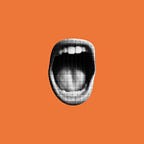Gaming Addiction Is Lurking In the Shadows
The invisible underreported threat is on its path to destroy our social skills and deteriorate our mental health
If you happen to live in a country that is not still struggling with basic human needs such as food, water, and shelter, online gaming and online gamers aren’t very hard to find. You could be the one whose closest people are gamers. Most of them play casually as a pastime activity. Some play slightly harder than others. Some may spend hours fighting ghouls or stressing over their next Candy Crush turns. Nobody should be alarmed by this behavior. You could easily find even yourself in this group. But there are borders when, once crossed, we enter into a new realm from which we or our loved one cannot escape by just saying no: The border from going from a heavy player to one diagnosed with gaming disorder.
Symptoms
According to The World Health Organisation (WHO), which has now officially categorized gaming disorder as a medical condition, there are three behavioral symptoms on which an official diagnosis can be based.
Each symptom should be approached with tact. We should not rush to conclusions by seeing immature signs.
A quick definition with which we can quantify our observation might help before we continue, and that is a…
